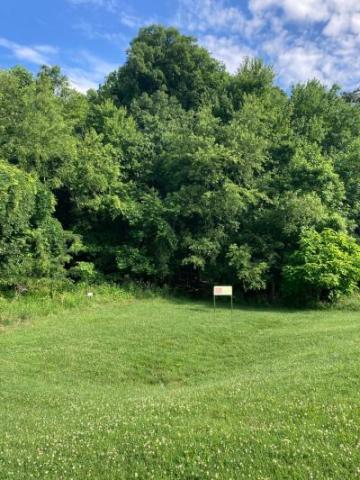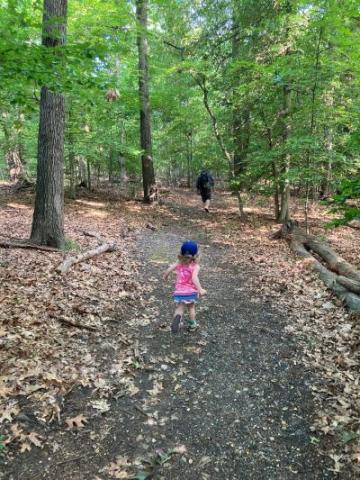Wooded Hillock
 Did you know there are wooded trails to hike on the University of Maryland’s campus? In the northwest corner of campus, across from the Terrapin Trail Garage, lies the Wooded Hillock, a natural area with rustic trails. Volunteer trail stewards scout for litter, rake leaves off the paths, and mark the knowns trails with fallen logs each season. Covering approximately 13 acres, here you are immersed in trees and fallen leaves, and the traffic on nearby Highway 193 fades to a murmur.
Did you know there are wooded trails to hike on the University of Maryland’s campus? In the northwest corner of campus, across from the Terrapin Trail Garage, lies the Wooded Hillock, a natural area with rustic trails. Volunteer trail stewards scout for litter, rake leaves off the paths, and mark the knowns trails with fallen logs each season. Covering approximately 13 acres, here you are immersed in trees and fallen leaves, and the traffic on nearby Highway 193 fades to a murmur.
While one feels solitude in these woods, the insect life abounds. Visitors are lucky to spot the zebra swallowtail flying in the sunny field at the entrance to the paths, probably nearby because of the pawpaw trees growing in these woods and on campus. Little white cabbage moths visit the clover and other wildflowers in the sunny spots as well. These little fliers don’t pause long enough for a proper photograph, so experiencing them in person is essential and special.
Entering the woods, decaying trees line the path and are patterned with galleries under the bark of boring beetles. A boring insect that we battle on campus is the Emerald Ash Borer (EAB), which makes galleries similar to these. While it’s hard to tell due to the deterioration of the tree if this was, in fact, part of the Fraxinus genus, there are other areas of campus that have confirmed EAB damage. Treatment for EAB is available and utilized on trees of significance on campus, such as the Fraxinus pennsylvanica at the Memorial Chapel’s Garden of Reflection & Remembrance.
Further on, a solitary wasp flits on the leaf matter, most likely looking for its next meal of insect. In the shade, the wasp is black, but sunlight brings out a blue iridescence. Generally non-aggressive, this family of wasps aren’t interested in humans. Since it’s June, lightning bugs are around and may land harmlessly on you as you walk. Wish it well and gently brush it away so that it can live to light up the night, or become another insect or animal’s next meal, contributing to this natural circle of life. Not only do insects abound on campus, but a wide variety of birds as well, thanks in part to the availability of food. From large birds like egrets, herons, hawks, pileated woodpeckers, and vultures, to small birds the Carolina wren, the birds are all across campus. Beetles live both in the cambium layer of the trees, leaving their galleries, but also in the leaf matter and decaying wood on the forest floor, the habitat of ground beetles. Turn over a log and you’ll likely find them, as well as an ant or termite colony scurrying every which way to protect their eggs.
Another delight is seeing damselflies flit by. Normally along ponds and tall grasses, it may be surprising to see one of these, but there is a large bioretention pond on the other side of Terrapin Trail Garage that attracts dragonflies, damselflies, and birds.
At first glance, the Wooded Hillock may seem bare, but taking a more mindful approach to hiking the trails, pausing often to push back leaves, look up into the canopy layer, and not rushing through the hike can provide a peek into the diversity of insects in this place. Wooded areas like these are key to offering a habitat for a wide variety of insects and creating a building block in the University’s effort to be a sustainable campus.
Know Before You Go
Please be respectful to the many plant, animals, insects, and people who enjoy this space. Borrowing a line from the National Park Service: take only pictures, leave only footprints. We encourage you to tag us @umdabg if you post to social media!
Remove any trash you bring with you, or pay it forward by picking up and properly disposing of trash you see.
Poison ivy and plants with thorns may be present on the Wooded Hillock, which will cause skin irritation if touched.
Ticks may be present from March - November. Stay on groomed trails and check for ticks after your walk. The US Center for Disease Control has excellent information on best practices: https://www.cdc.gov/ticks/index.html
Consider bringing insect repellent, water, and a journal if you wish.
Written by Meg Smolinski, Outreach Coordinator

